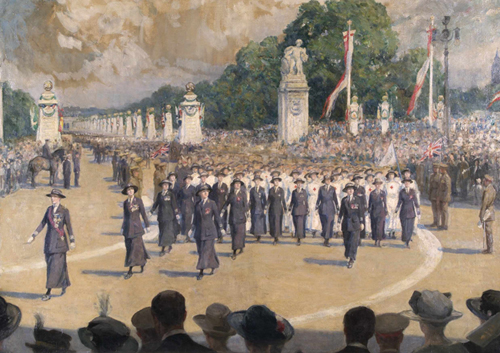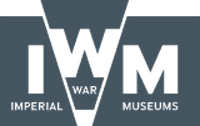Nature and Scope – Visual Perspectives and Narratives
Introduction
Visual Perspectives and Narratives features a diverse range of unique material from the unparalleled holdings of Imperial War Museums. Through various visual and documentary resources, such as official and personal photographs, manuscripts, rare printed material, artwork, objects and film, this profound collection presents international perspectives
on the conflict, the Home Front, the role of women during the war, and much more.
The wide array of document types and topics covered provides a firm foundation for study and research, offering students and scholars an unsurpassed resource on multiple aspects of the Great War.

Unique primary sources cover important themes:
- International perspectives on the conflict
- The role of women
- The British Home Front
- Industry and economy
- Societies, organisations and volunteers
- Education
- Entertainment
- Religion and spiritualism
- Food and rationing
- Children
- Demobilisation
- Celebration
A variety of document types include:
- Photographs depicting activities across various nations and theatres of war, from the front line to the Home Front.
- Diaries and letters offering insights into training, women and the war effort, Ireland and the Easter Rising, hospitals and auxiliary services, volunteerism, transport, entertainment and various battle fronts.
- Artwork (oil paintings, watercolours, pastels and pencil sketches) presenting realistic depictions of dockyards, munitions factories and battlefields, to expressionist works conveying the raw emotion of war.
- Artists’ commissioning documents contextualising featured art pieces, including papers from the Pictorial Propaganda Committee, individual artists’ files with original briefs, discussions of propaganda and educational uses, and catalogues describing various touring exhibitions.
- Posters highlighting the international dimensions of the conflict, with selections from Australia, Austro-Hungary, China, India, Ireland, Italy, New Zealand, Russia and South Africa, in addition to women’s war work, the sinking of the Lusitania and the German U-boat campaign.
- Books and pamphlets covering case studies of local communities during the war, motor transport and railways, British and American industry, records of prisoners of war, accounts of air raids, food facts and women during the war.
- Ephemera in the form of hymn books, playbills, practical advice leaflets, agricultural and rationing material and charity pin badges, badges, stamps and postcards to raise money for local and international causes.
- Film clips spanning the full duration of the Great War, covering various international forces, events surrrounding the assassination of Franz Ferdinand, medical services, recruitment and training, warfare, women at war and propaganda.
- Museum objects showcasing weapons and ammunition, equipment, vehicles, aircraft, ships, souvenirs, ephemera, uniforms and insignia.
A wealth of secondary sources supplements the rich primary material, including:
- An art feature, showcasing the work of Great War artists and the key themes they explored throughout the war.
- Interactive maps exploring the extent of the conflict on key battle fronts.
- An illustrated chronology presenting an overview of significant dates and events.
- A Great War Glossary detailing key words and phrases.
- Contextual essays from academics and collection specialists, covering topics such as photography, the women’s war effort, artwork, the British Home Front and film.
Imperial War Museums
Imperial War Museums is unique in its coverage of conflicts, especially those involving Britain and the Commonwealth, from the First World War to the present day. It seeks to provide for, and to encourage, the study and understanding of the history of modern war and 'wartime experience'.
Imperial War Museums is a family of five museums: IWM London; IWM North in Trafford, Greater Manchester; IWM Duxford near Cambridge; the Churchill War Rooms in Whitehall, London; and the historic ship HMS Belfast, moored in the Pool of London on the River Thames.
We would like to thank the staff at IWM for their support and guidance throughout the project process.

* Please note: If you have purchased Module 3 only, you will not have access to Module 1 and Module 2 documents and primary source links within the secondary contextual material.


